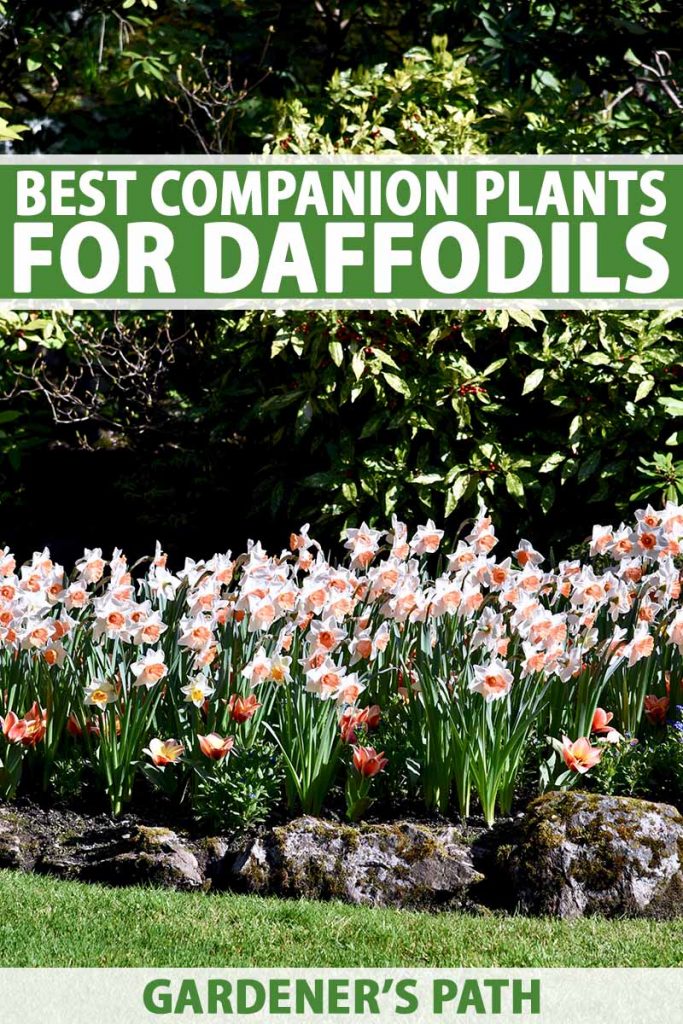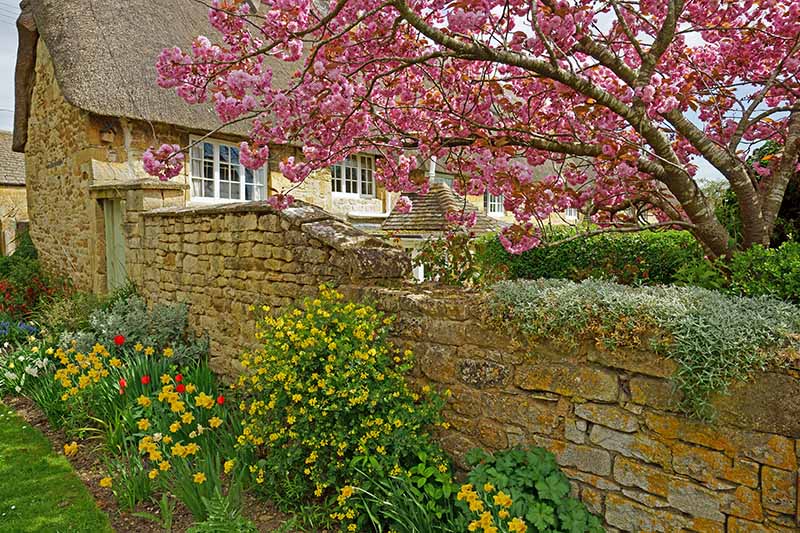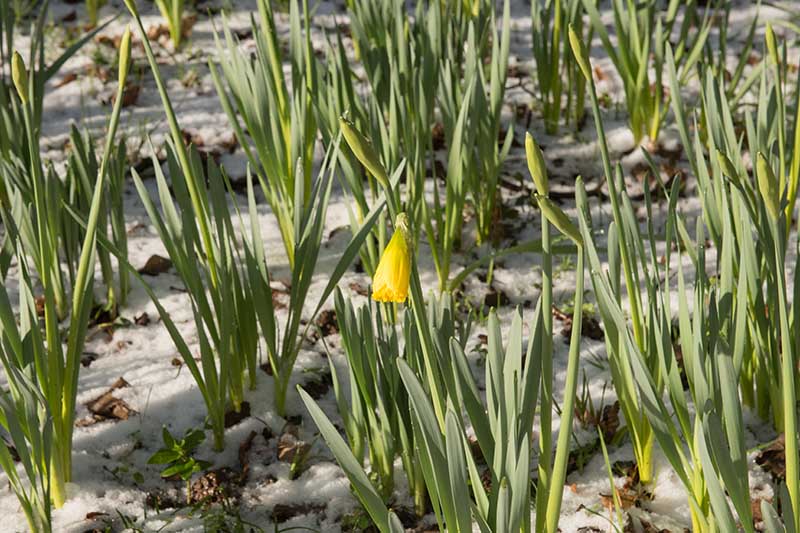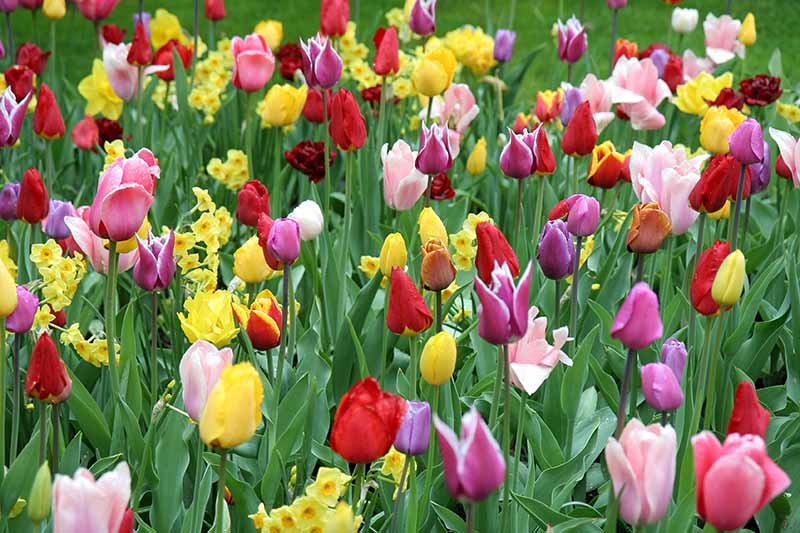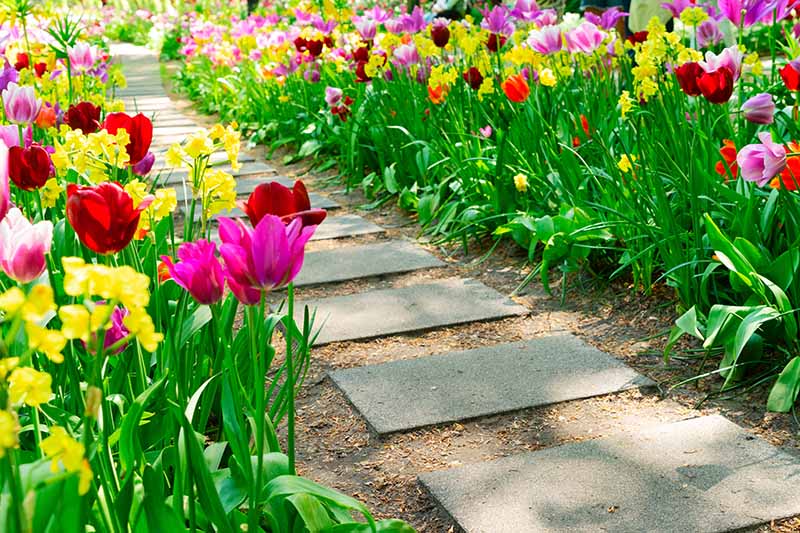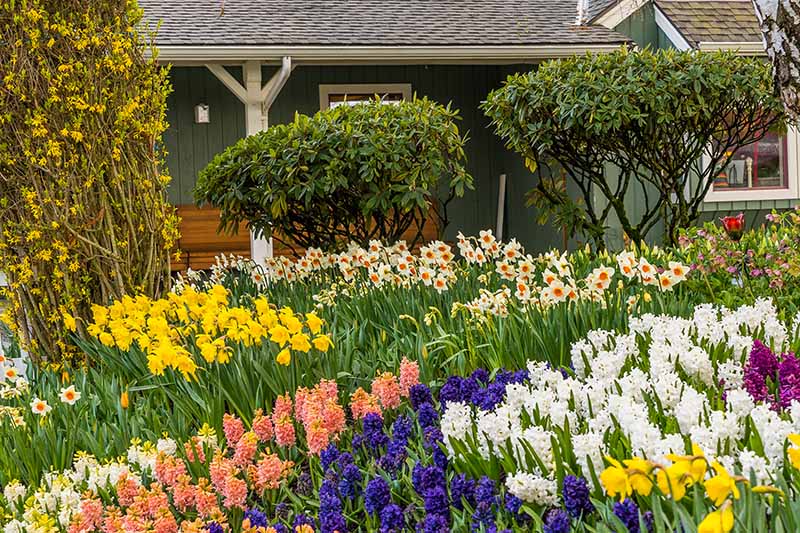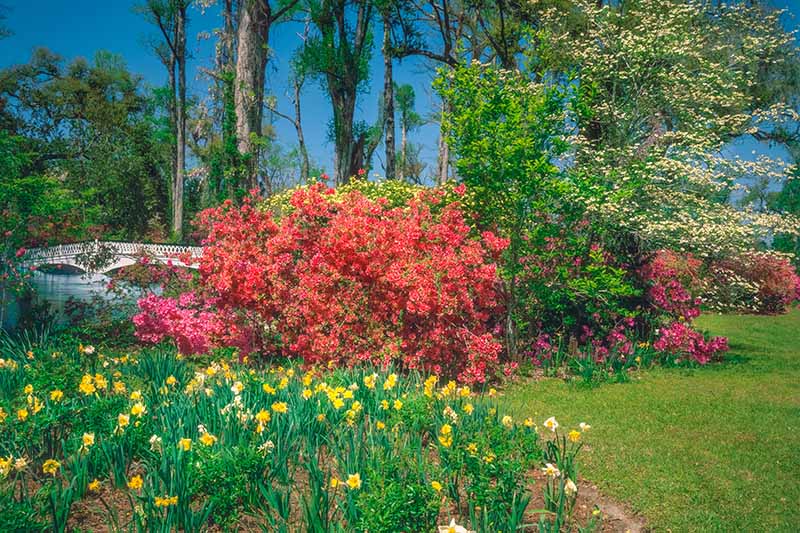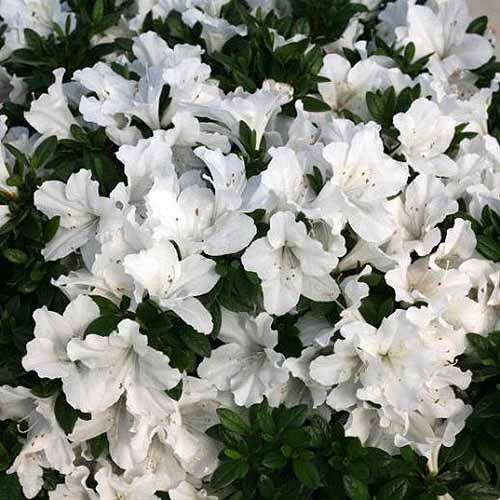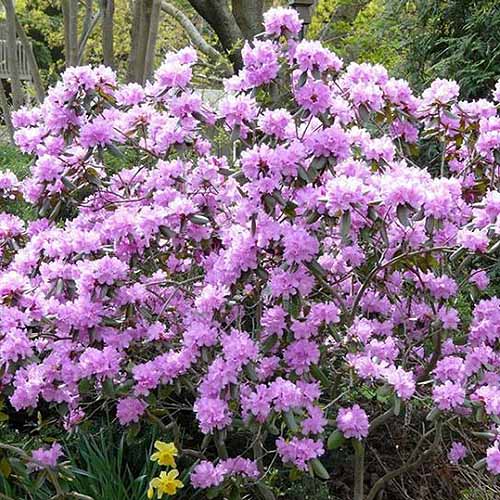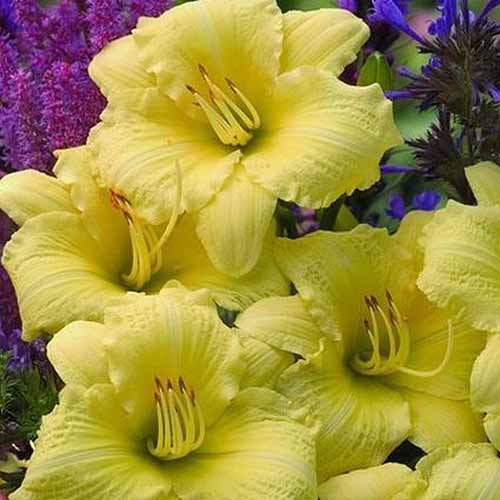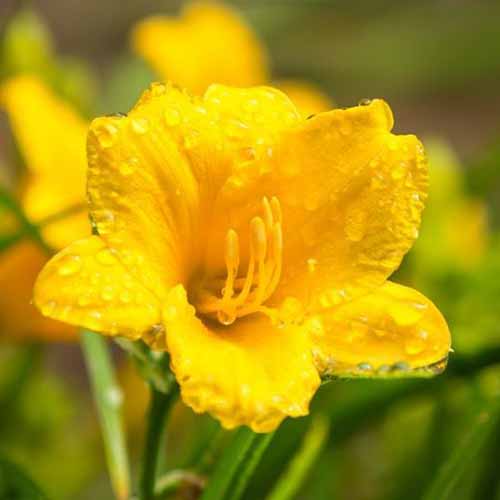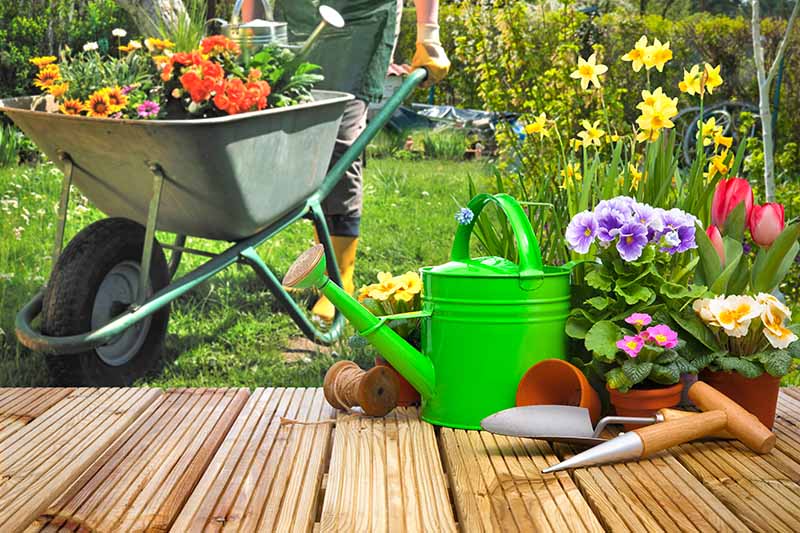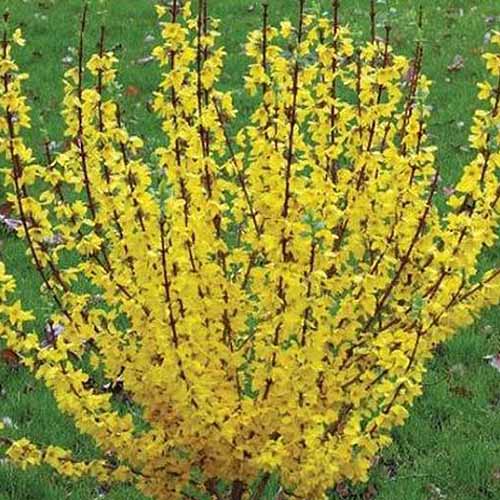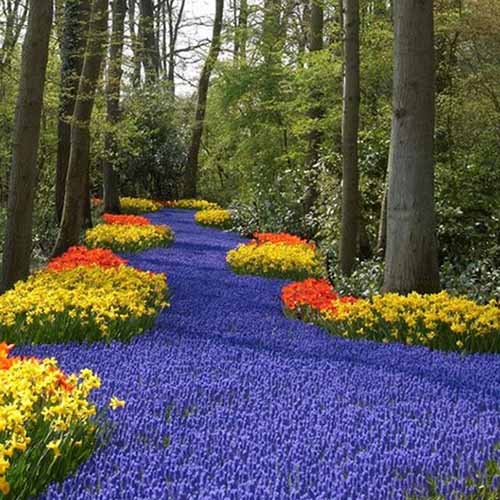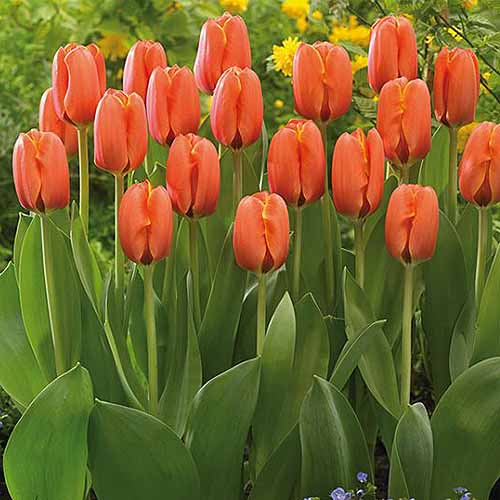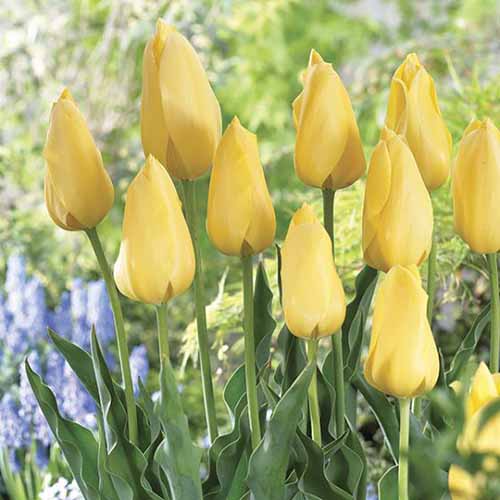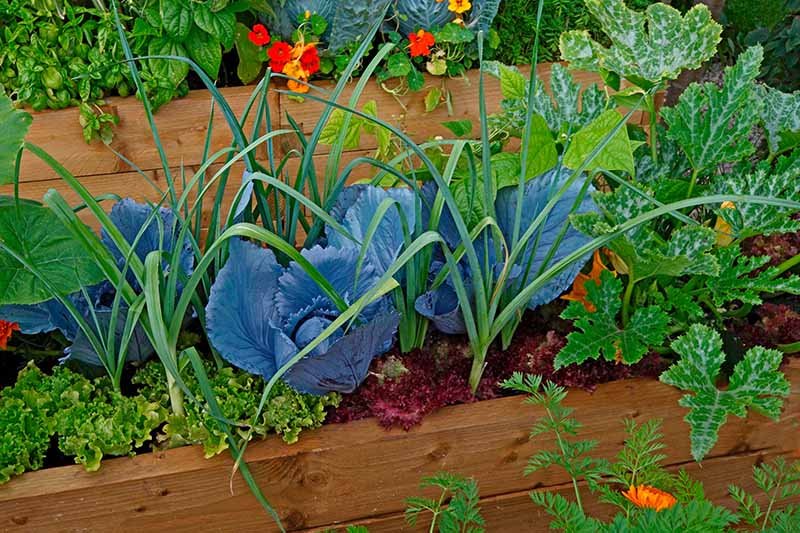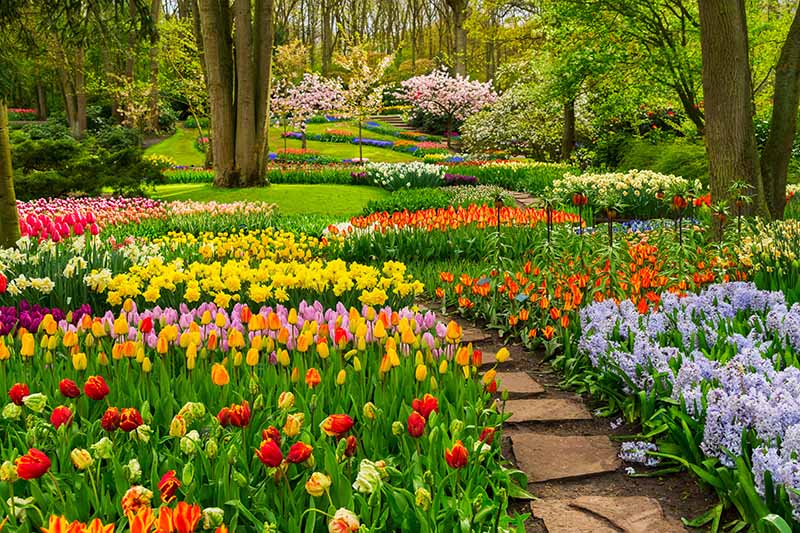I am fortunate to live on a plot of land of more than an acre, and each spring a succession of daffodils shoot up and burst forth in glorious gold, yellow, deep orange, and cream. A number of these bulbs came from my mother, who faithfully divided her naturalized planting of dozens until it became hundreds. We link to vendors to help you find relevant products. If you buy from one of our links, we may earn a commission. Each of my five living sisters and brother and I have a healthy supply of her passalongs, spreading now across our yards, borders, and gardens. I confess I have never paid much attention to which are early, mid-, or late-season varieties, but I enjoy each new wave of blooms. And then it’s my turn to share. I deliver them in makeshift vases to a few people that need cheering each spring, some for going on 12 years now. I also carry at least one bouquet every year to someone I don’t know well but would like to be better friends with. This past season, that was a woman who runs a t-shirt shop to benefit the financially vulnerable in my neighborhood. Almost every time, that gesture has brought me new companions, or helped me to reconnect with old friends.
And here’s where this play on the phrase “companion plant” segues to an important flower gardening strategy: If you’re careful to grow daffodils using the principles of companion planting, you’ll have many more beautiful blooms to share so you can establish new friendships. Plus, these plant friends can help to extend the season, and cover up spent foliage when your bulbs are finished blooming for the year. I can’t tell you who to share with, but I’m happy to explain this idea of beneficial pairing. I’ll include tips in the following areas. Let’s get started.
What Daffodils Need from Companions
Companion planting is part science, part shared lessons handed down from home gardener to home gardener.
It’s essentially the practice of growing certain varieties of plants close to each other to increase yields, prevent pest infestations and disease, and/or create garden designs with beautiful contrasts or complementary colors. Good companions won’t compete for nutrients in the soil and if you choose plants of different heights, they will not crowd each other out or block sunlight. Daffodils are members of the Narcissus genus, part of the Amaryllidaceae family, and are also commonly known as narcissus or, in certain parts of the US, as jonquils. Botanically speaking, jonquils are technically members of the N. jonquilla species. You can learn more about the differences between daffodils and jonquils in this guide. (coming soon!) In the case of daffodils, companion planting is less about disease and pest prevention, because these bulbs aren’t particularly susceptible. To find out more about the diseases and pests they do occasionally fall prey to, consult our growing guide.
Instead, savvy gardeners carefully choose what to place near daffodils with an eye towards creating appealing color combinations, and adding interest to the garden throughout the spring and summer. At the same time, these spring-blooming bulbs have one very specific characteristic that makes it especially important to judiciously decide what to grow nearby: When they’re done providing a riot of color to spark our winter-worn spirits, their messy dead foliage has to stay in place. Even though it will take its sweet time to yellow and wither, sometimes six or eight weeks, it’s forbidden to remove those leaves during that phase. I know, I know. I was also taken aback the first time someone told me you couldn’t just clip the dead foliage down to the nubs and be done with it. I may have whined a little, too, especially after learning that a more attractive option I’d seen on Pinterest was a no-go. Those projects where you braid daffodil leaves and clip or tie them so they’ll look tidier? That will bruise and damage the foliage, which hurts next year’s growth prospects. It all goes back to that seventh grade photosynthesis lesson. The bulbs are food storage units that contain all the nutrition the plant will need for the next growing season. The bulbs obtain nutrients from those fading leaves, through photosynthesis. Lop off or otherwise harm those sources of chlorophyll and you could seriously compromise their ability to come back at all next year, much less bloom or spread. This inconvenient truth means that you’ll have to put up with scraggly, unsightly withering leaves in the spots that were once overflowing with bright yellow flowers. But that’s where good daffodil companions can help you out. The top choices described here will hide those patches until next year’s bloomfest is assured.
The best plants to grow nearby may start developing their leaves or begin flowering just in time to obscure the bald spots left by early-blooming narcissus. Even perennials that pop up fairly early in spring may provide this function, since some daffodil varieties start blooming in January or February in milder growing areas. On that schedule, the foliage may begin to die back in March. Other types bloom their best in mid- or even late spring, so they’ll need coverage from perennials that leaf and flower a bit later in the season. There are other good reasons to grow certain plants next to your daffodils – it’s not all about covering up untidy dead leaves. Some make good daffodil companions because they bloom around the same time, and in colors that complement those bright yellow, deep orange, pink, or lemon hues. Others are beneficial because they can share the space and then bloom later, providing elements of interest in your flower garden or landscape throughout the spring and summer.
It’s also helpful when flowering neighbors are fellow perennials, have similar water and fertilizer requirements, are suited to go in the garden at the same time, and prefer direct sun but don’t grow so tall that they compete for sunlight.
The Best Daffodil Companion Plants
As long as your daffodils are growing in a naturalized setting, or perhaps in a container, you really don’t have to fret much about what you place nearby.
If you plant them in your yard or meadow, these hearty charmers will spread in the spots where the conditions and companions are to their liking. It’s sort of like they choose their own friends. The most you’ll have to do in those gardening scenarios is water them if the springtime weather is super dry, giving them maybe an inch of water per week during the blooming season. You may also need to divide them if they clump up and stop blooming. But if you are planning to set them somewhere more formal – be that a garden bed, border, or along a walkway – they will thank you for putting some thought into selecting their companions. Here are some great choices:
1. Azaleas and Rhododendrons
This is one of those times to indulge in creating some eye candy. The pastels and spring colors of azalea and rhododendron flowers are especially appealing alongside yellow, red-oranges, and cream blooms.
If you plan and space them carefully, you’ll be able to enjoy the blooms together and still get a bit of a dead-foliage screen from the bushes. The azaleas or rhododendrons will still be going strong when the leaves of the daffodils have started to wither.
‘Bloomathon’ Azalea ‘Bloomathon’ white reblooming azalea is available from Nature Hills Nursery. ‘P.J.M’ (short for Peter J. Mezitt) rhododendron blooms in a delightful shade of lavender, offset by vibrant green leaves.
‘P.J.M’ Rhododendron You can find ‘P.J.M’ plants in #2 or #3 containers available at Nature Hills Nursery. You can learn more about growing azaleas here.
2. Daylilies
Daylilies are among a handful of perennials that are all good mates for daffodils because they bloom in midsummer, just as late-season narcissus flowers are starting to fade and flop over. The daylilies will provide some continued interest in the landscape, and are substantial enough to shield the dying leaves from view.
‘Going Bananas’ Daylilies There are other advantages to growing these two together, too. Both go in the ground in the fall, so you can conserve effort. You can prepare and site the bed once for both sets of blooms, since they both thrive in full sun, and do well with an ordinary balanced fertilizer. And when the summer’s over, both of them benefit from a thick layer of mulch in preparation for another season of buddying up.
‘Stella de Oro’ Daylily Also, if you’re dedicated to swathes of yellow in your perennial bed, you can grow the same color of both daffodils and daylilies to continue the theme throughout the blooming season. Many varieties of daylily are available in containers from Nature Hills Nursery, including light yellow ‘Going Bananas’ and deep gold ‘Stella de Oro.’ Read our complete guide to growing daylilies for tips.
3. Forsythia
Along with also bursting forth in that bright yellow color that enlivens the transition from freezing temps to springtime, forsythia is a good pal because, once it’s established, it won’t compete for water.
It has another handy habit, too: It begins its springtime growing cycle by producing blooms on its branches. Only later do they drop as the leaves begin to appear, and for part of the season the flowering bush has both blooms and leaves. This makes them a good neighbor because the green branches can help to obscure messy fading foliage from the spent narcissus. Both plants need mulch, love a sunny spot, and are best planted in fall, which makes planning pretty simple. The only caution, and it’s a big one, is to keep in mind how quickly the forsythia grows and becomes bushy. This isn’t a big issue in the spring, because the daffodils will have finished blooming for the season by the time the bush starts flourishing.
‘Show Off’ Forsythia But the natural growth habit of these shrubs can become a problem if the forsythia takes over its whole allotted area, and that of neighboring perennials. Luckily, it’s a simple matter to keep forsythia under control by pruning it in early spring, right as its cheery blossoms start dropping. ‘Show Off’ forsythia is available from Nature Hills Nursery in four-inch pots. Read more about how to grow forsythia in our guide.
4. Grape Hyacinths
Blue and yellow look great together in the garden. I’ll always associate tiny grape hyacinths with that striking bright blue, their typical shade, though they’re also available in various shades of purple or even pink. Have fun pairing different varieties of grape hyacinth with different color daffodils. It’s hard to go wrong!
Muscari armeniacum The grape hyacinths also usually grow just six to 12 inches tall and spread up to eight inches, so they won’t compete for water or sun, either. And you can establish both of them in the fall. Dig once, plant twice, enjoy ever so many times – that’s the best way. Grape hyacinth bulbs are available from Eden Brothers in bags of 25, 50, or 100. Learn how to grow grape hyacinth in this guide.
5. Tulips
Plant tulips in front of daffodils to hide the fading foliage. And you can grow daylilies in front of them, to hide their spent leaves when the time comes.
‘Darwi Orange’ Tulip All three go in the ground in the fall, so you can plan the whole swath of color at one time. There is one thing to keep in mind, though: Be sure to only plant tulips where you can reach them pretty easily, and delineate their spot with a tiny flag or other marker.
‘Big Smile’ Tulip Tulips usually need to be dug up and replanted more often than their narcissus buddies, and you don’t want to disturb those bulbs to reach the tulips. Nature Hills Nursery offers yellow ‘Big Smile’ and ‘Darwi Orange’ tulips, and either would look great planted with other yellow flowers. Check out our guide to growing tulips and learn about the different types of tulips here.
Don’t Plant Daffodils Near These
Even these easygoing spring bloomers don’t get along great with all the other flora and fauna. The reasons why you wouldn’t want to plant certain things next to daffodils are fairly straightforward: Either they compete for resources like sunlight or water, or they do little to cover up those unappealing spaces daffodils leave behind after they bloom. Sometimes, though, it’s the narcissus that makes a poor garden plot buddy. They may make certain plants more susceptible to squirrels and other rodent pests, for example, or get in the way of planting seasonal crops. Here are four of the worst daffodil companion plants:
1. Annuals, Especially Vegetables
One advantage of perennials is that you only have to plant them once, and they’ll continue to grow and thrive year after year. But that makes them a bad choice for any area where you’ll need to dig, till, or replant with each passing spring, summer, or fall. So daffodils are best grown separately from annual flowers like marigolds or zinnias. You wouldn’t want to disturb the bulbs, or worse, accidentally hack them to bits when you’re just trying to make way for your summertime favorites. As for annual vegetables, they have even more potential to harm neighboring narcissus. Like annual flowers, they require tilling each season. They’re also heavy feeders, while our sunny yellow friends only need occasional slow-release fertilizer to thrive, and 5-10-10 (NPK) is ample. Along with their conflicting nutritional needs, vegetables grow quickly. Those early spring peas can block much-needed sunlight, while tall tomatoes and even sunflowers later in spring can co-opt water needed for next season’s bulb development.
2. Beeches, Dogwoods, and Maples
It’s totally cool and looks charming to plant these bright yellow blooms at the base of some types of trees, especially the ones that don’t leaf out until later in the spring. But it’s a good idea to avoid growing them too close to beeches, dogwoods, maples, and any other trees that also produce shallow-but-strong masses of roots. Those roots will form at just the spot where the bulbs are trying to draw water, and may even spread. The neighborly arrangement might work for a season or two, but then the plants will begin to suffer.
3. Plants That Squirrels and Rabbits Love
There’s great news for those of us who are fighting little critters to keep our bedding plants and vegetables intact: Daffodils deter rodents! These members of the Amaryllidaceae family contain a toxin that most insects avoid, and rodents – even squirrels! – won’t eat. But that doesn’t mean you should grow the type of flowering plants squirrels and rabbits adore near your daffodils. While the scent may repel them a bit, it’s more likely that they’ll fall on your petunias and fledgling tomatoes with even more gusto, since they’re right next to a plant they won’t eat.
4. Taller Perennials That Bloom at the Same Time
It’s such fun to match these bright yellow and creamy white colors with those of other spring-blooming perennials. But be careful! While they’re blooming, they’ll need at least six hours of sun. So make sure any other perennials planted nearby won’t be sending out tall stalks, big leaves, or flowers that could block the sun from reaching the sweet little plants below. Winter jasmine is one example. It approaches an oppressive height and width at right about the same time when the earliest narcissus varieties would be in bloom. This is of particular concern for those tinier types like ‘Bridal Crown.’ You wouldn’t want to plant them next to anything that will loom over them, even tulips, or fellow daffodil varieties with huge blooms like ‘Chromacolor.’
They do take some extra consideration when you’re selecting where they’ll grow and what to plant nearby. But these yellow, cream, peach, white, and orange spring-blooming beauties pay back any effort in multiples. They’ll spread on their own, they last a good while in a vase, and their first shoots always serve notice that spring has sprung. Do you love to grow daffodils? We’d love to hear more about your experience in the comments. Share a photo or two as well, if you can. And if this info was helpful, check out these guides for more information on growing daffodils next:
How to Create a Naturalized Daffodil Planting 15 of the Best Daffodil Cultivars for Naturalized Plantings 5 Reasons Why Your Daffodils Aren’t Blooming
© Ask the Experts, LLC. ALL RIGHTS RESERVED. See our TOS for more details. Product photos via Eden Brothers and Nature Hills Nursery. Uncredited photos: Shutterstock.
